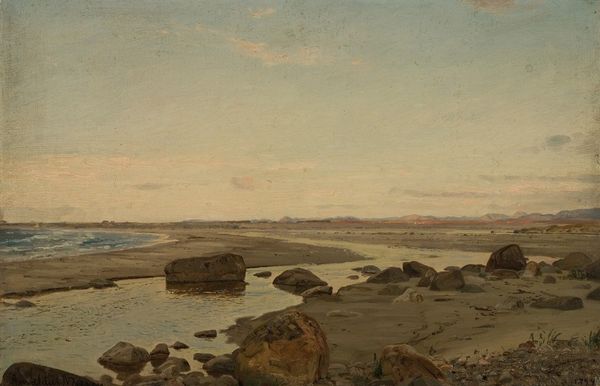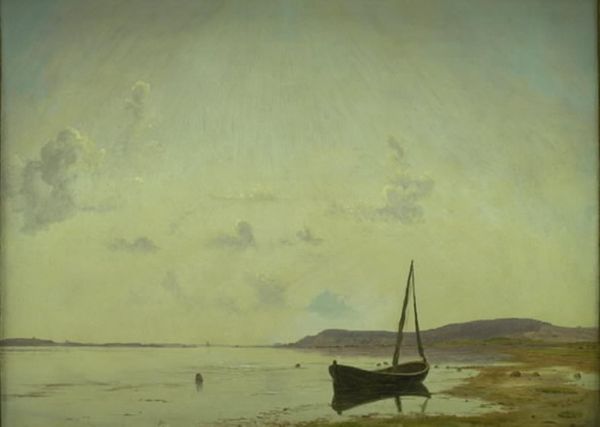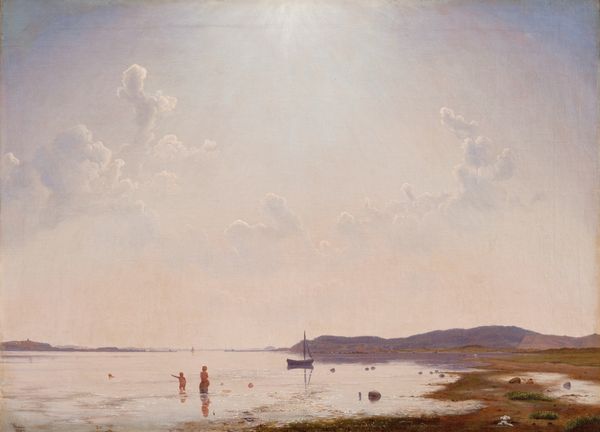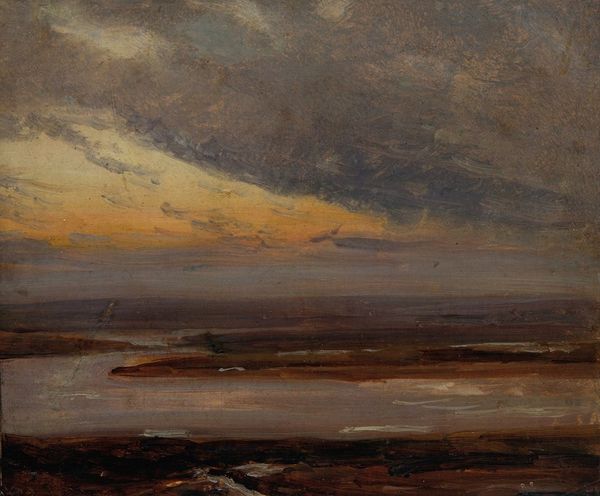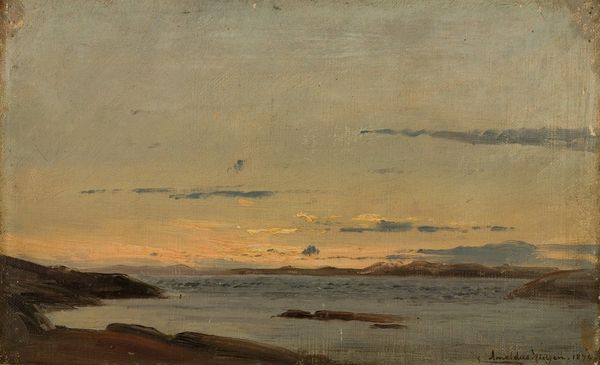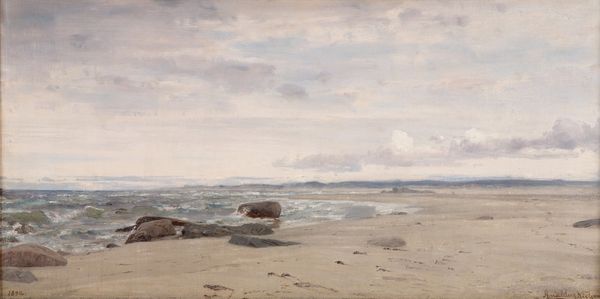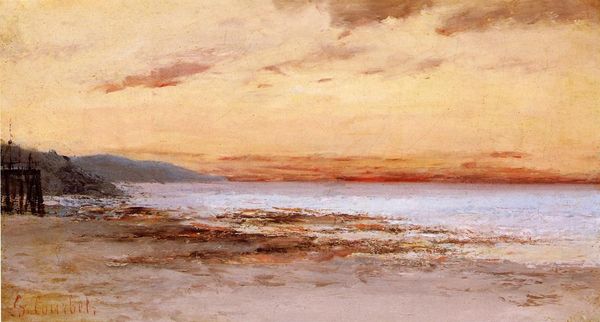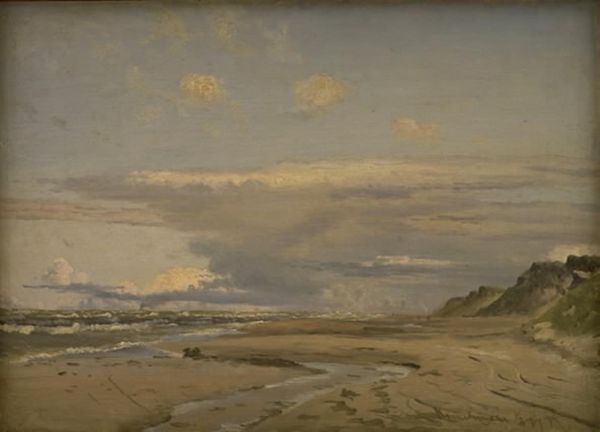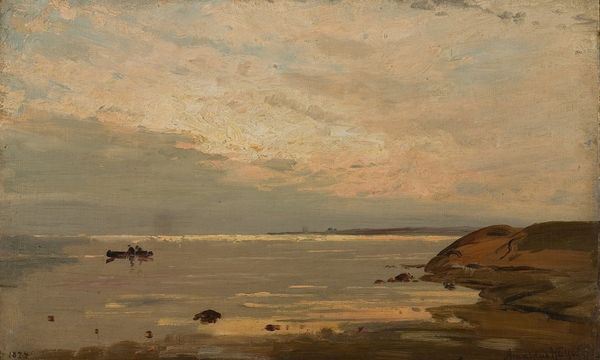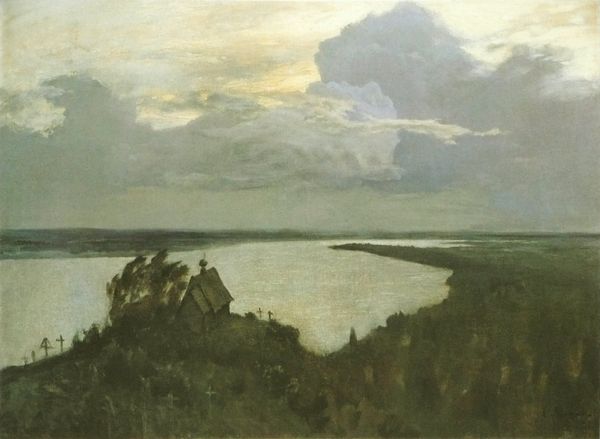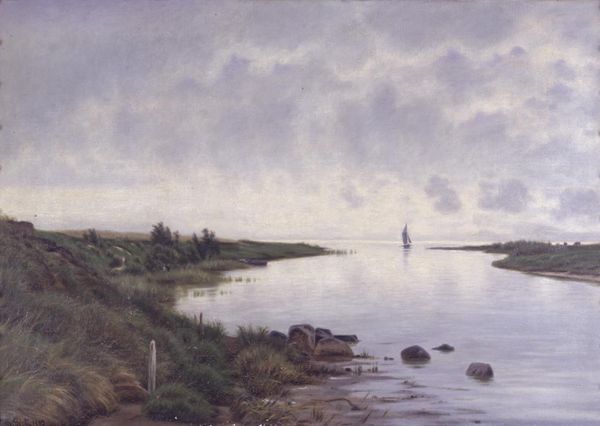
Dimensions: 107 cm (height) x 160.5 cm (width) (Netto)
Curator: This is A. Thorenfeld’s “Parti af Jyllands Østkyst. Stille sommerdag,” painted in 1886. The canvas presents a slice of the east coast of Jutland on what appears to be a serene summer day, rendered in oil paint. Editor: Serene is the perfect word. It’s calming, almost to the point of being melancholic. The hazy sky blends into the water, and there’s this muted color palette throughout, creating a really tranquil mood. Curator: Absolutely. Thorenfeld captures that specific Northern light and feeling so well, a common pursuit for painters working en plein air during that period. The piece strikes me as carrying echoes of the Romantic ideals, especially that interest in landscape as a reflection of inner states. Editor: Right, the scale here amplifies that feeling, doesn't it? The land and sea seem to stretch on forever. I see that the Romantic style intersects with the emerging Realism—the composition leans toward capturing the scene as it is, free from the heroic narratives found in earlier landscape painting. It suggests a connection to land ownership and leisure of the rising bourgeois class. Curator: Yes, the light especially has the weight of lived reality. It is interesting how the eye is drawn to the areas where the brushstrokes are more textured. Notice the contrasts: rough textures of the beach contrasting the calm water? This highlights the materiality of place but perhaps also mirrors a certain cultural relationship to the natural landscape itself. Editor: And what about those pale, almost spectral, clouds? They’re reflected subtly in the water, adding a layer of ethereal quality that contrasts with the grounded earthiness of the shore. You feel the quietude of nature, but there’s also this undeniable sense of isolation. Considering the push for industrialization in Denmark at that time, was Thorenfeld commenting on preserving these landscapes? Curator: It's quite possible, that undercurrent of cultural tension runs throughout a lot of landscape art from this period, that desire to cling to older traditions as the world rapidly modernised. Perhaps this landscape represents the collective cultural memories associated with that simpler life. Editor: The way we can still experience it here is fascinating. A tangible moment, brought back to life for us today. Curator: It is a compelling scene that draws you into its stillness, inviting contemplation on time and our place within the vastness of nature.
Comments
No comments
Be the first to comment and join the conversation on the ultimate creative platform.

